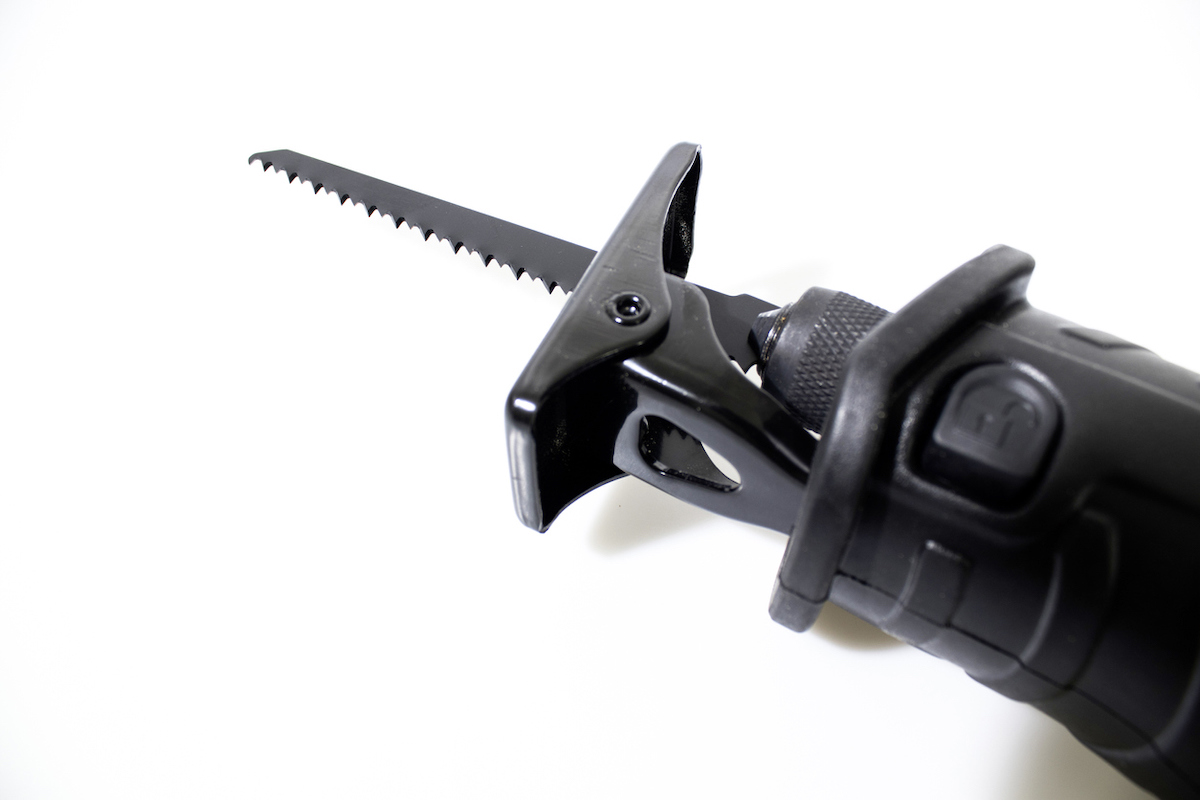We may earn revenue from the products available on this page and participate in affiliate programs. Learn More ›
While it is a common tool in many DIY projects, some people still ask what is a reciprocating saw and what is a reciprocating saw used for? The first question is relatively easy to answer. A reciprocating saw is a power tool that rapidly moves a saw blade (or any other applicable attachment) back and forth, replacing the sawing motion that a DIYer would make with a manual saw. However, answering the question, “What does a reciprocating saw do?” is complex because there are many reciprocating saw uses.
If you know how to use a reciprocating saw, you can use one to cut through wood, nails, metal, plaster, and even ceramic tile with the right blade. When you consider that there is a wide range of attachments beyond simple blades, like grout removal tools, sanding tools, and scouring pads, it’s easier to understand why there are so many uses for a reciprocating saw. Learn more about the various uses of a reciprocating saw below, so you can expand the scope of your next DIY project.
Our Recommendation: DEWALT DCS367B Reciprocating Saw on Amazon for $268.69
This compact, lightweight cordless reciprocating saw by DeWalt is easy to maneuver in tight spaces, has a variable-speed trigger for increased user control, and comes with a 20V battery pack.
RELATED: The Best Reciprocating Saws for Demolition and Pruning, Tested
1. Demolition in Small or Awkward Spaces
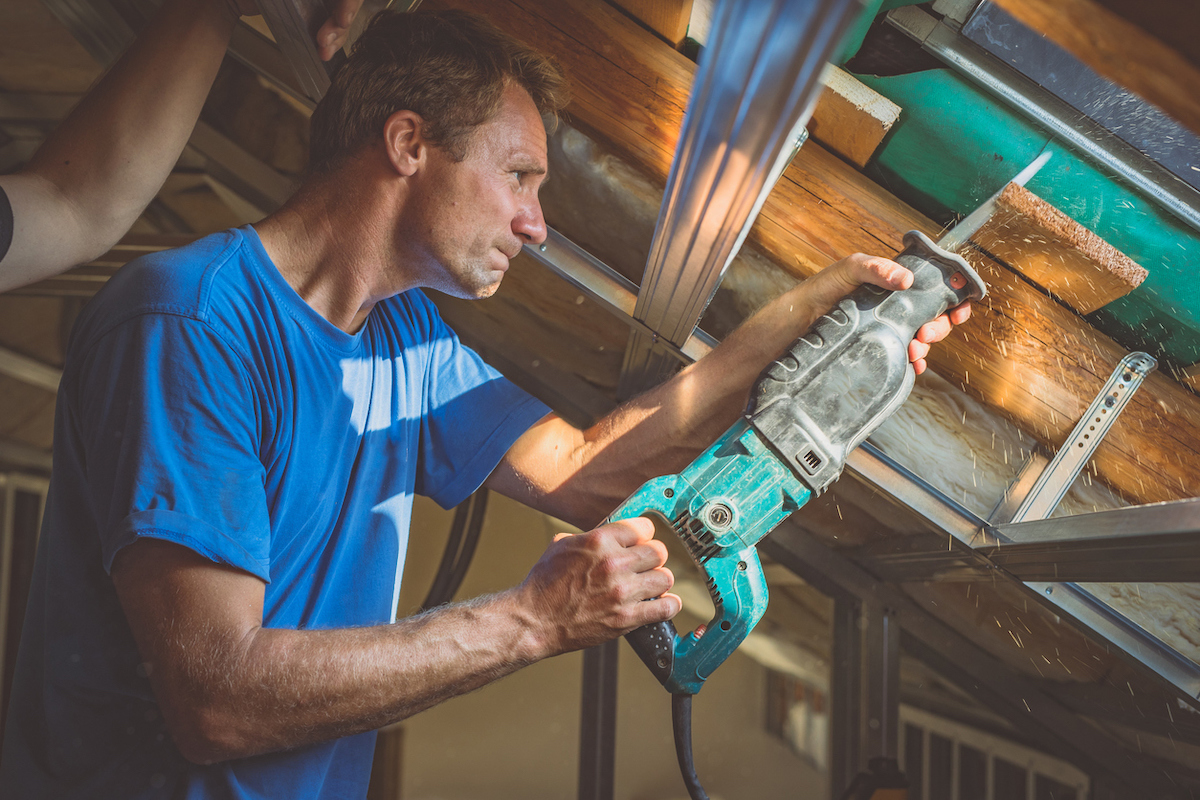
One of the most common reciprocating saw uses is cutting through studs and framework to help facilitate demolition efforts. While it may feel cathartic to swing a sledgehammer through a wall a few times, you’re going to start to get tired quickly if you rely on strength alone. Use a wood cutting blade to slice through wooden frames instead, or switch to a metal cutting blade if you are dealing with metal drywall framework.
The compact size and flexible cutting direction of a reciprocating saw make it ideal for working in small, tight spaces, especially when more destructive tools, like a sledgehammer or jackhammer, won’t fit. Keep in mind that with the right blade or attachment, reciprocating saws can even be used on mortar, brick, tile, or other masonry materials to help with demolition projects.
2. Cutting Through Wood and Nails
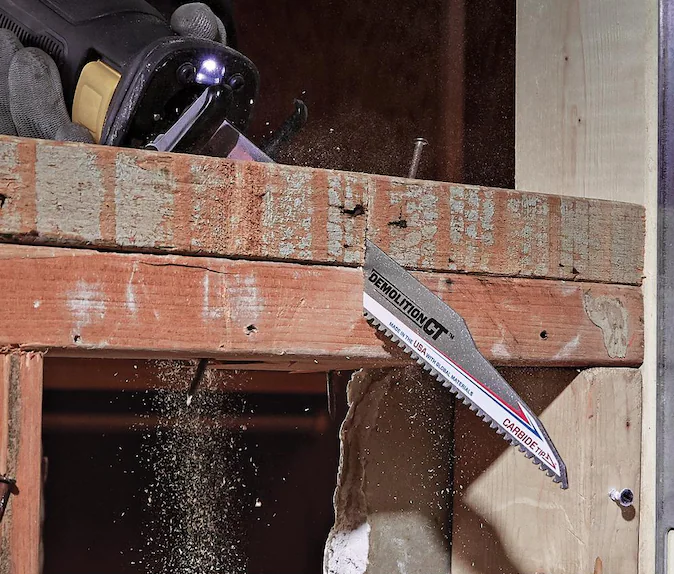
Another reciprocating saw use is cutting through both wood and nails. This task doesn’t even require a special blade. Simply attach a standard demolition blade to the reciprocating saw and use it to make quick work of wooden studs, nails, screws, pins, and other small pieces of metal that you may find buried in construction material.
Always wear a dust mask when operating a reciprocating saw to avoid breathing sawdust, gloves to help protect your hands, and safety glasses to prevent flying pieces of wood or metal from damaging your eyes. Also, it’s important to grip the saw tightly while you work, as reciprocating saws can kick back toward the user when they come in contact with a hard material if they are not held firmly.
3. Pruning Trees and Shrubs

Similar to cutting through wooden construction materials, a reciprocating saw can also be used to prune the trees, bushes, or shrubs in your yard. Choose a wood cutting blade to slice cleanly through overgrown branches in order to manage your yard. Keep in mind that you may find it easier to work with a cordless reciprocating saw when you need to cut through dense foliage, but the added power of a corded reciprocating saw is likely better for dealing with thicker branches or cutting through the trunk of a small tree.
It’s recommended to invest in a pole saw if you need to prune the branches overhead, simply because these tools allow you to remain on the ground while you work. Climbing a ladder to use a reciprocating saw for this purpose is possible, but it’s much more dangerous than using an extendable pole saw.
4. Cutting Various Plumbing Pipes
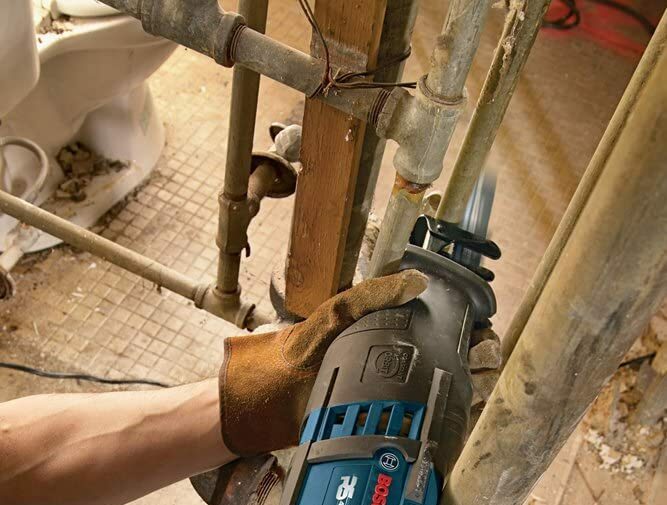
Plumbers work with a variety of different materials to complete their work, including cutting wall studs, digging through concrete, measuring and cutting pipes for installation, and removing old plumbing lines, fixtures, and valves. This is just a brief list, but it’s easy to see that a reciprocating saw would be incredibly helpful to a professional plumber.
Plumbers and DIYers can also use a reciprocating saw to cut through iron, lead, copper, brass, plastic, and PVC pipes in order to complete plumbing projects at home. Reciprocating saws can cut vertically, horizontally, diagonally, and essentially any angle in between. So it doesn’t matter how the plumbing line is installed—a reciprocating saw can slice cleanly through pipe to allow for repairs or upgrades to existing plumbing.
5. Scrape Glue, Mastic, and Other Adhesives
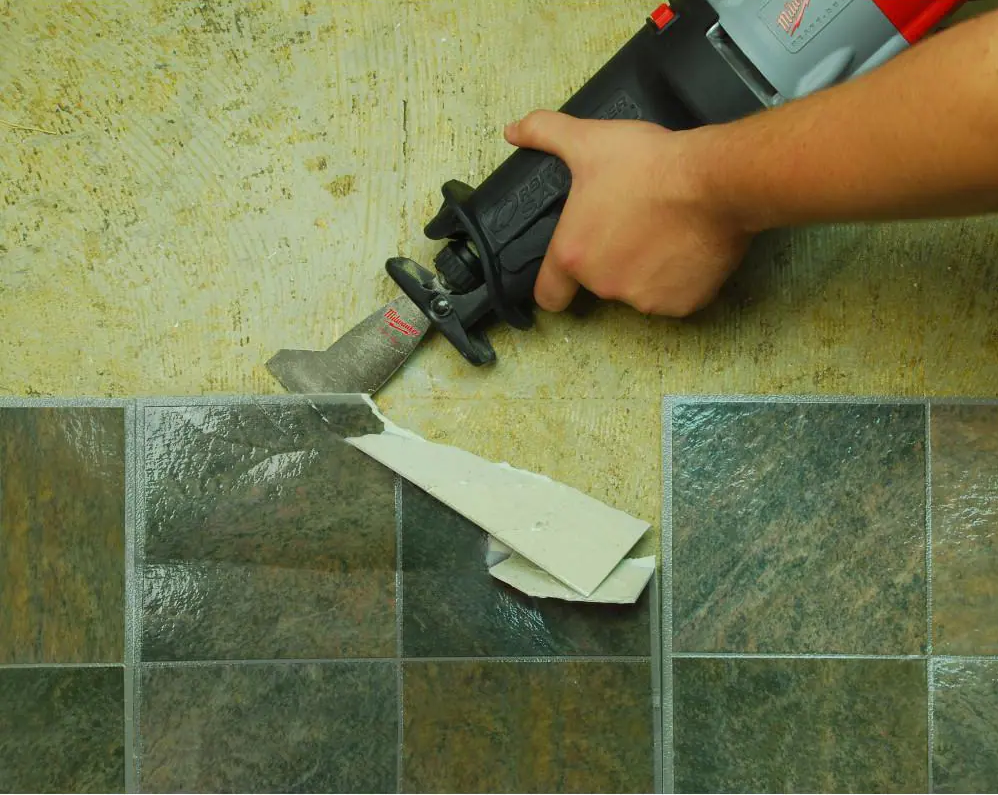
Switch the reciprocating blade out for a scraper blade attachment to quickly and effectively scrape away glue, mastic, and other adhesive components. A scraper blade like this option available at The Home Depot is designed to slide under these adhesive materials so that each thrust of the scraper gradually lifts up more and more adhesive. Of course, this happens incredibly fast since the scraper blade moves at the same speed as a normal cutting blade. Use this reciprocating saw attachment to lift up tiles, deal with stubborn flooring, and remove glued-down carpet.
RELATED: 7 Types of Saws Every DIYer Should Get to Know
6. Remove Grout
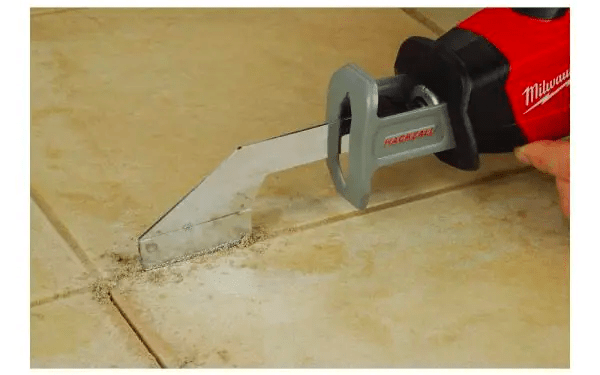
One project where using a reciprocating saw may seem unlikely is retiling a shower, but when you use a grout rake attachment like this option available at The Home Depot, a reciprocating saw can make short work of old grout. It can be used to remove sanded and unsanded cement-based grouts, as well as epoxy grout lines. The grout rake attachment has a slightly curved blade with a coarse-grit surface that moves through grout with ease. If you are reusing tiles after removing the grout, make sure to work carefully to avoid damaging tiles with the blade.
7. Sand and Scour Metal
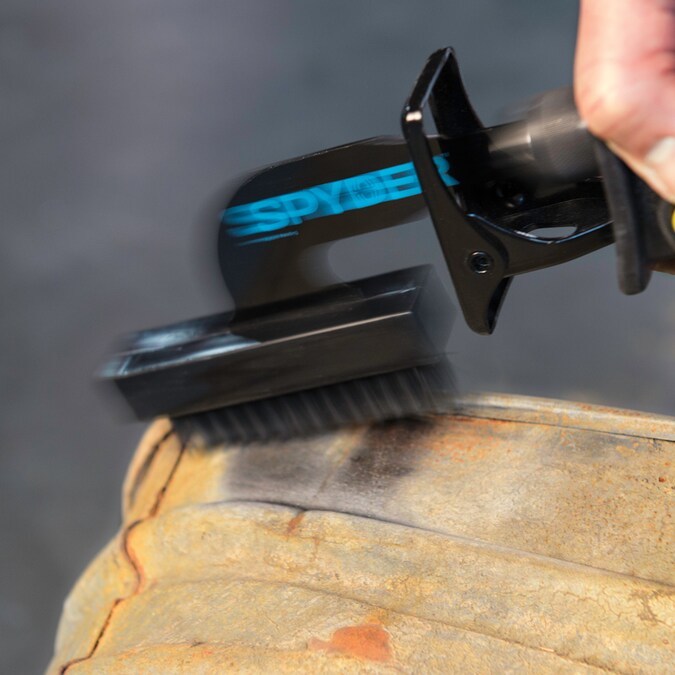
Belt and orbital sanders are usually the best option for sanding and scouring wood or metal projects, but a reciprocating saw with a sanding pad, a scouring pad, or a wire brush attachment like this option available at Ace Hardware can perform the same function. Scouring pad attachments are mostly used for cleaning metal surfaces, like a greasy barbecue grill, though they can also be used on ceramic tile, stone, brick, or concrete.
Sanding pads are typically used to sand wooden surfaces, though they can also be used to remove rust, deburr, or polish metal surfaces. However, wire brush attachments are generally better for rust removal and deburring metal surfaces.
8. Cleanup After Storms
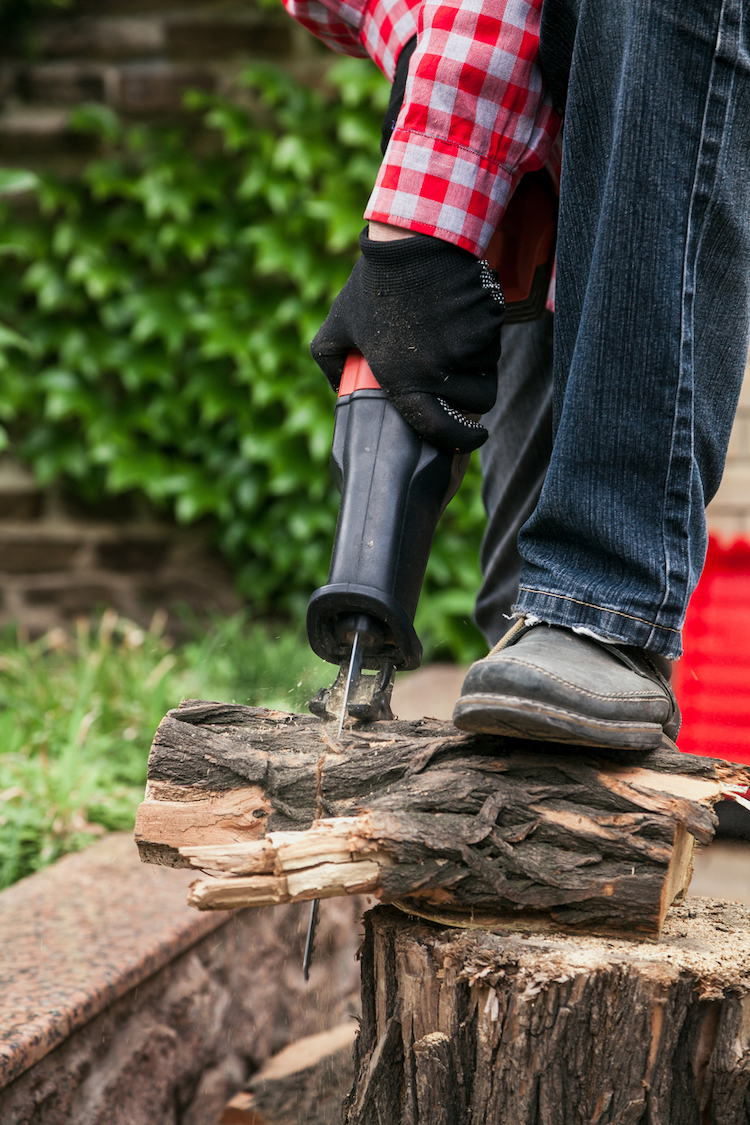
When major storms hit, branches, full trees, and other debris can be blown down the streets, into your yard, or even onto your home. Severe damage should always be handled by professionals, but if you have a tree or a large branch that falls into the yard, then you can use a reciprocating saw to cut the material into smaller pieces for disposal. This tool can also be used to cut up and dispose of construction debris that may have blown into your yard or torn off of your home, like shingles, siding, or gutters.

